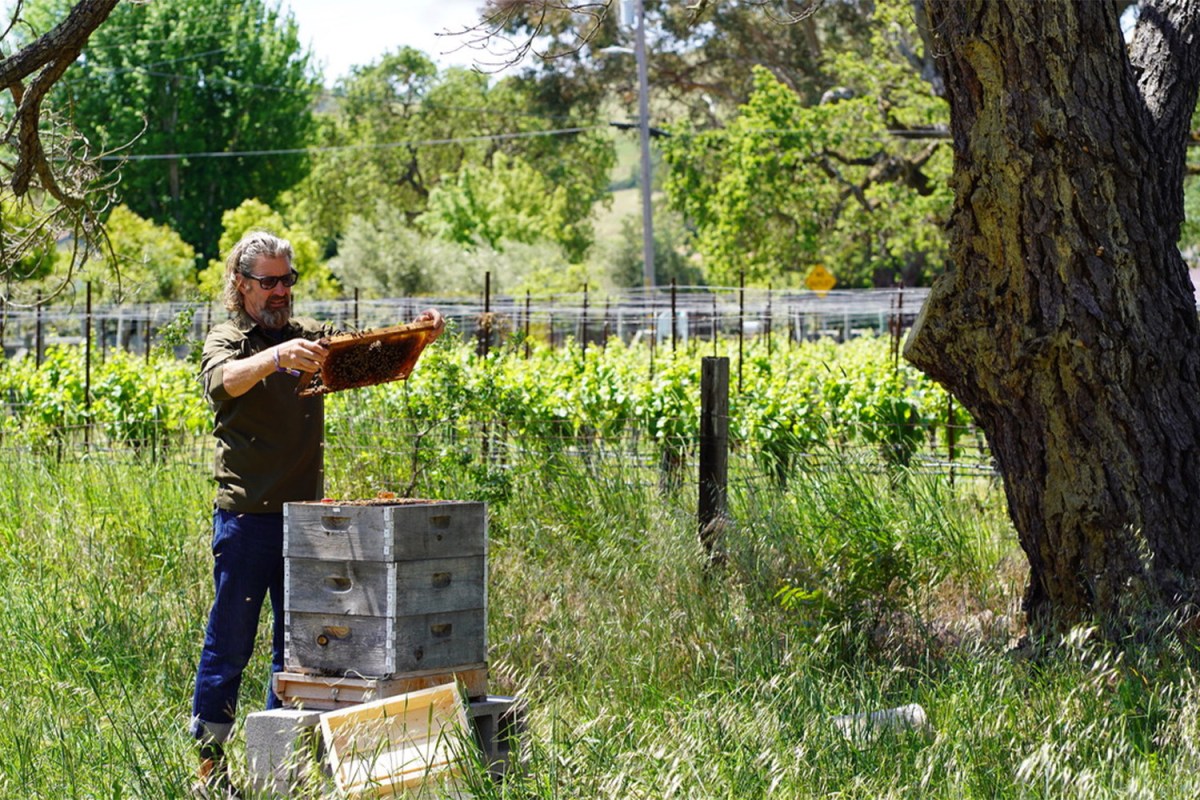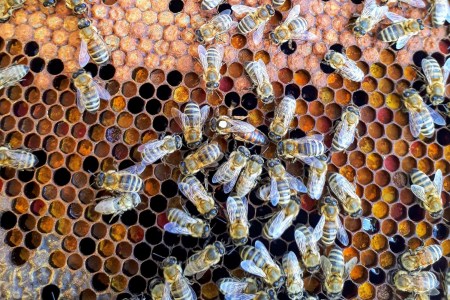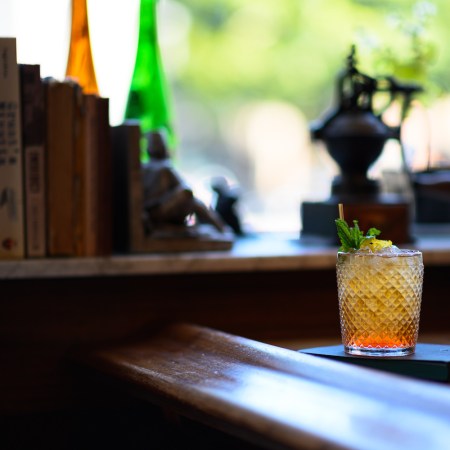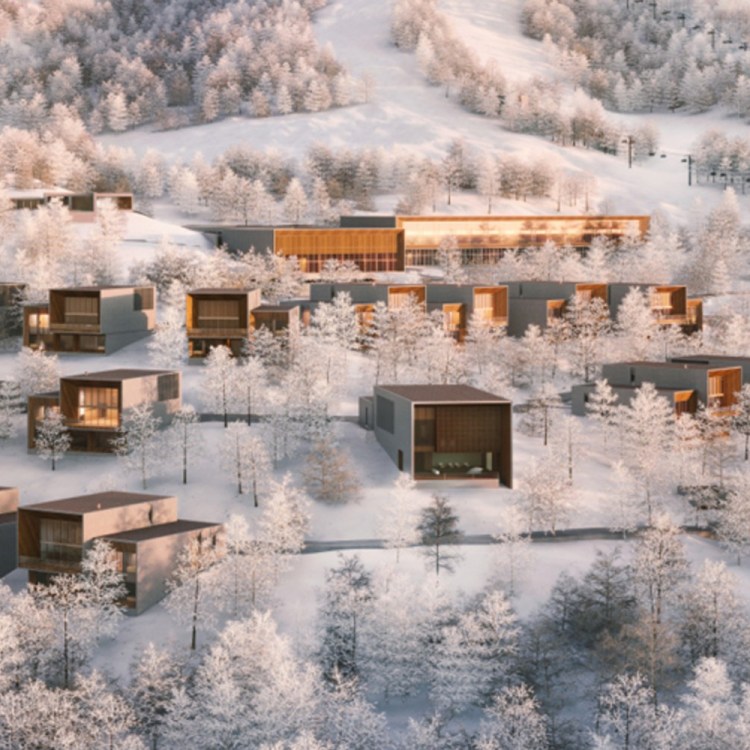“I always say bees are a lot like cats, they do what they want. They’re on their own schedule and I respect that,” Rob Keller tells me over the phone from his home in downtown Napa. Caring for over 100 bee colonies across 45 different apiaries, he’s basically the go-to guy for anything and everything bee-related across the county.
A veterinary tech turned sculptor, Keller fell in love with bees by accident while earning his MFA at UC Davis after incorporating them into his art practice on Egyptian funerary rites. He founded Napa Valley Bee Co. in the late ’90s and is now considered a leading educator of regenerative beekeeping in Northern California. Keller doesn’t “keep” bees — rather he lets them do their own thing while creating conditions as close to wild as possible.
“My intention and management practice has always been to get a deeper understanding of the species,” he says, “work with them in their ‘bee space’ and not ask them to do things that weren’t within their natural biological flow.”
As a dedicated regenerative apiculturist, this means “not hustling them for honey,” no supplemental feeding unless critical and allowing them to “build comb” to the cell size their biorhythms dictate. Some beekeepers incorporate plastic foundations into hives for bees to build onto, but Keller says it’s rarely the scale they would choose to create in nature.
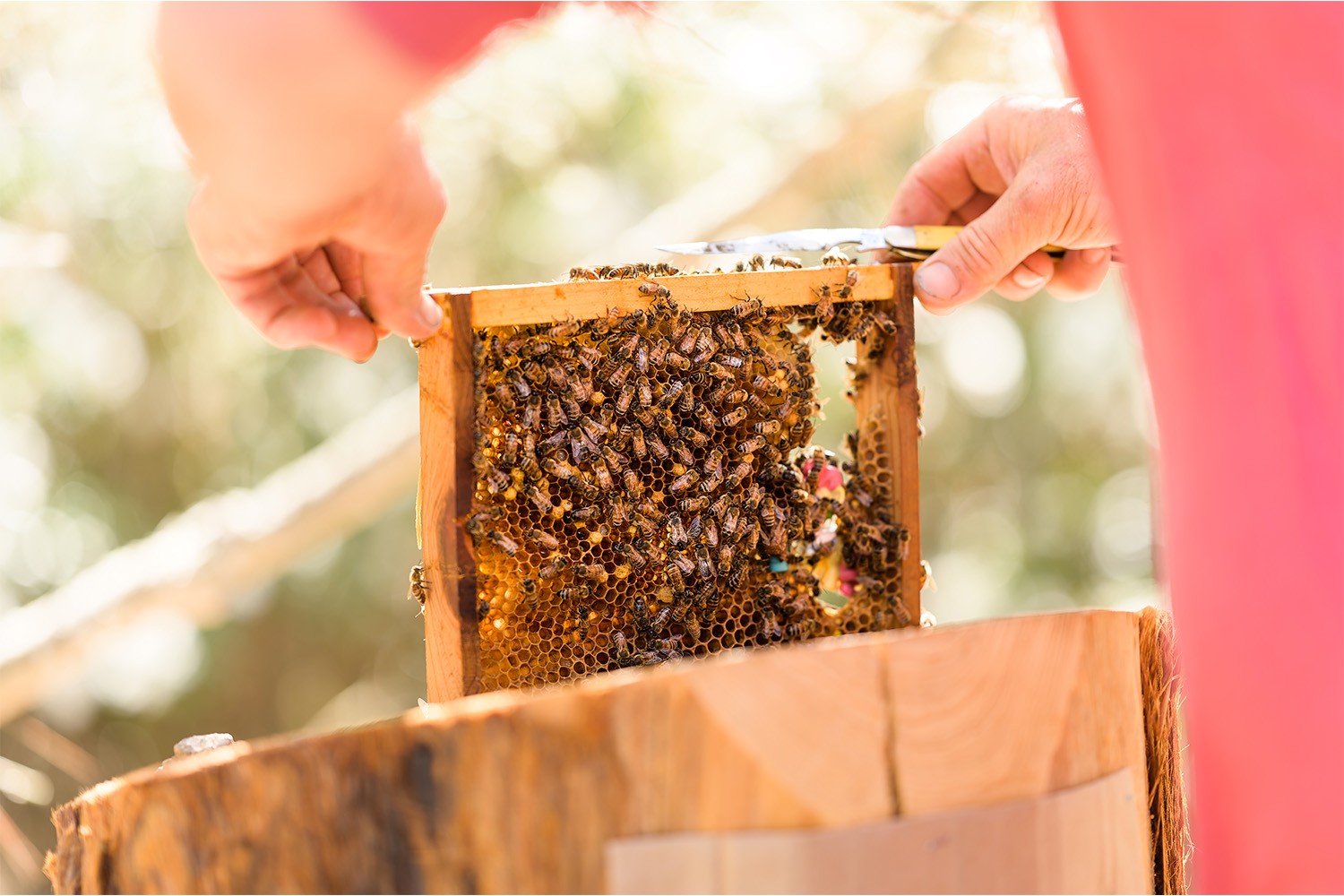
The Regenerative Way: Let Bees Be Bees
The use of pesticides in agriculture is one of the main threats to California’s native bee populations. A statewide survey last year (the first in nearly four decades) turned up just 17 of the 25 bumble bee species historically known to reside in the state. Fueled by increased awareness of dwindling numbers, there’s been a boom in backyard beekeeping, but Keller is honest with anyone keen to start a hive. “I ask if they have the bandwidth, because this stuff is hard work, and we don’t need more beekeepers. New hives can potentially cause issues in a three-mile radius, but most beginners won’t have the skill set to initially recognize that.”
He says the first step to helping bees is to plant flowers. “Pick good clean forage and know where your seeds are coming from — are they organic, non-GMO or heirloom?” Keller recommends Johnny’s, Annie’s or Baker Creek (and skipping big-box home improvement stores where many of the garden plants labeled bee-friendly contain systemic pesticides or insecticides in their DNA), specifically plants like salvia (Mystic Spires Blue), sage and rosemary of which he prefers the trailing varietal as their blooms last longer. “I’m a big zinnia pusher too — I love it so much I named my dog after it.”
Bees Delayed a Flight From Houston to Atlanta
The flight was delayed by three hoursKeller gets called a lot — next week he’ll visit four new properties — but one place he pops into regularly is Carneros Resort and Spa. “I feel an obligation locally to be a frontman for the species, and when it comes to sustainability and stewardship of the land in Napa, Carneros walks the walk and talks the talk with their Beyond Green credentials. When their managing director reached out to me, I was like, ‘Of course I’m going to manage your bees.’”
One of the 24 founding members of Beyond Green, a portfolio of vetted hotels, lodges and resorts around the world dedicated to conservation, eco-friendly practices and educational travel experiences, Carneros is a bucolic 28-acre estate in the hills of Napa — basically a haven for bees. When Edward Costa took over as managing director in late 2016, he was keen to ramp up sustainability initiatives there: plastics were eliminated, water stations added and recycling implemented. With a growing demand for sustainable travel, Costa said Beyond Green felt like the next natural step to make Carneros an even more enticing Napa experience for its guests.
“I know how important bees are to the environment and read great things about Rob,” Costa recounts, “so when he came out and we discussed the story that I wanted to tell here, creating this landscape and expanding our gardens for the bees to keep them coming back, he got excited.”
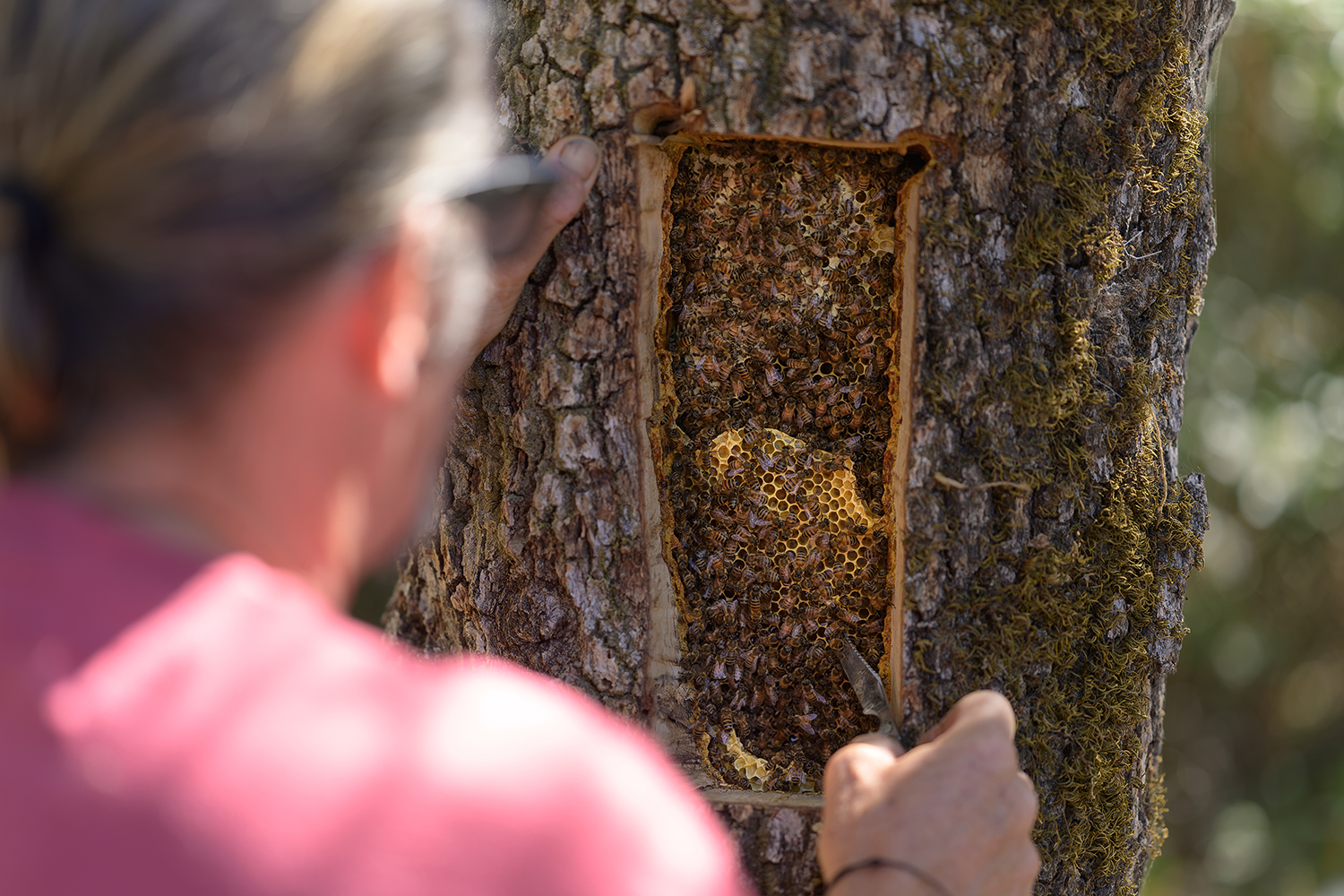
“All the Buzz” at Carneros Resort and Spa
Keller relocated five log hives (fashioned from cutout sections of tree versus the more recognizable, modular-style Langstroth hive) to the property. This freestyle “bees in the trees” method mimics a natural nesting site and helps them stay warm in the winter and not overheat in the summer. “It’s a unique situation at Carneros, but between Ed, chef Jerome and the groundskeeper Paul, everyone keeps an eye on the bees,” Keller explains. “I usually go out to the hives with Rachel Karr though, she’s the Market manager, but passionate about bees, very thoughtful and brings this larger-than-life personality to their All the Buzz guest experience.”
After strolling to the apiary, Karr talks about the life cycle of bees and their habitat with a peek inside a hive before heading back to the resort for a honey and cheese tasting paired with a glass of local wine. Costa says that while Carneros champions a range of green initiatives, many are behind the scenes, but the bees offer something tangible. “Most people don’t get the chance to see this kind of thing firsthand — to walk around the property, learn about bees and taste honey from the hive. The feedback has been phenomenal; [All the Buzz] one of our most popular programs.”
For Keller, the reward is two-fold: getting to educate people about the importance of bees, and the connection between the culinary arts and beekeeping. “I feel blessed that so many people support the mission at Carneros because they’re not getting vast amounts of honey — I always tell them drizzle, don’t pour; think of it as a fine balsamic — but we’ve made some lovely bread and cookies, and chefs like Jerome and others around Napa are pushing the boundaries with what they can do not only with honey but other hive products like wax and propolis.”
Known for crafting unique observation hives for private commission (there’s been one inside of a Victorian dollhouse and a life-size fiberglass donkey), the creative side of Keller’s bee guardianship is another Carneros-only experience. The Ukrainian-style bee bed he made with kids from St. Helena Montessori, where he also teaches, allows guests to literally lay down with the bees. Screened for safety, the bees are underneath and fly in and out of an opening at the back. Keller says that micro-vibrations from their wings can soothe the nervous and muscular systems, inducing a state of balance while air near the hives is highly-ionized, which helps reduce free radicals.
“I have pictures from my first bee colony in ’97 and never had a plan, but have just been so blessed for this to be my life,” Keller tells me. “Working at places like Carneros and with the kids at St. Helena, I’m doing what I love, man. I eat, sleep and drink bees.”
In addition to All the Buzz at Carneros, anyone keen to go on a deeper “hive dive” with Keller can sign up for his three-day beekeeping apprenticeship through Vacation With An Artist (VAWAA).
This article was featured in the InsideHook SF newsletter. Sign up now for more from the Bay Area.
